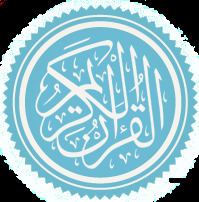 | ||
Rasm is an Arabic writing script often used in the early centuries of Arabic literature (7th century - early 11th century AD). Essentially it is the same as today's Arabic script except for the big difference that dots and dashes are omitted. It is also known as Arabic skeleton script. In Rasm notation, the five distinct letters ـبـ ـتـ ـثـ ـنـ ـيـ are indistinguishable because all the dots are omitted. In other words Rasm script omits i'jam pointing.
In the early Arabic manuscripts that survive today (physical manuscripts dated 7th and 8th centuries AD), one finds dots but "putting dots was in no case compulsory". Some manuscripts have no dots at all, while others add dots only sparingly and only in phrase contexts where the scribe thinks the omission of dotting on a word would leave the meaning ambiguous.
Rasm (Arabic: رَسْم) means 'drawing', outline, or pattern in Arabic. When speaking of the Qur'an, it stands for the basic text made of the 18 letters without vowel diacritics and without i'jam consonant points.
The rasm is the oldest part of the Arabic script; it has 18 elements, excluding the ligature of lām and alif. When isolated and in the final position, the 18 letters are visually distinct. However, in the initial and medial positions, certain letters that are distinct otherwise are not differentiated visually. This results in only 15 visually distinct glyphs each in the initial and medial positions.
Compare the Basmala, the beginning verse of the Qurʾān with all diacritics and with the rasm only. Note that when rasm is written with spaces, spaces do not only occur between words. Within a word, spaces also appear between adjacent letters that are not connected.
Historical example
The Kufic Samarkand Qur'an that was from 1869 to 1917 in St. Petersburg shows almost only the rasm.
